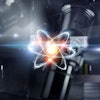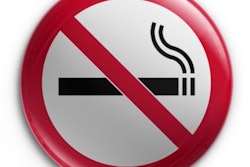
Fewer Americans died from cancer between 2003 and 2012, according to the latest report on cancer incidence and mortality by the U.S. Centers for Disease Control and Prevention (CDC). The overall cancer mortality rate fell 1.5% for men and women, and cancer incidence dropped as well for men -- although not for women.
The report states that the declining rates are due to a combination of factors, ranging from individuals stopping behaviors such as smoking to improvements in detection and treatment. Cancer mortality has been declining since the early 1990s for adults and since the 1970s for children.
In addition to the overall 1.5% mortality decline for both sexes, men saw a 1.8% drop and women a 1.4% drop from 2003 to 2012.
In overall cancer incidence, men and women saw a 1% decline from 2003 to 2012; men had a 1.7% drop while women had a 0.3% drop. In men, the decline in incidence accelerated from 2008 to 2012, at 3.2%, while in women the drop in incidence remained the same, at 0.3%.
| Change in mortality by cancer, 2003-2012 | |
| Average annual change in mortality rate | |
| Overall -- men and women | -1.5% |
| Overall -- men | -1.8% |
| Prostate | -3.5% |
| Stomach | -3.3% |
| Colon and rectum | -2.9% |
| Lung and bronchus | -2.7% |
| Larynx | -2.5% |
| Liver and intrahepatic bile duct | 2.8% |
| Overall -- women | -1.4% |
| Non-Hodgkin's lymphoma | -3.1% |
| Colon and rectum | -2.9% |
| Stomach | -2.6% |
| Ovary | -2% |
| Breast | -1.9% |
| Liver and intrahepatic bile duct | 2.2% |
The report pointed out that successful tobacco control strategies have produced a decline in the lung cancer rate, and it highlighted the importance of low-dose CT lung cancer screening in continuing to reduce lung cancer mortality.
Likewise, colorectal cancer screening is believed to have led to a reduction in mortality from colon and rectal cancer, although the report noted that 35% of Americans are not up to date with recommended screening guidelines.
With respect to breast cancer, the CDC wrote that "advances in treatment and early detection contribute to the ongoing decrease in breast cancer mortality among women overall." However, there are racial and ethnic disparities in terms of who is benefiting from screening, with black women experiencing higher breast cancer death rates than white women. Research is underway to better understand these disparities, according to the report.
Screening for prostate cancer using the prostate-specific antigen (PSA) test has been a controversial topic. The CDC said that prostate cancer incidence has fallen with the reduction in PSA testing, and it will closely monitor prostate cancer incidence and death rates in the coming years "to ensure a balance is achieved between reducing unnecessary screening and ensuring appropriate and early diagnosis and treatment of more aggressive cases of this important cancer among men."
Liver cancer was one of the few cancers to show a rising mortality rate over the study period, and incidence rates increased 2.3% overall from 2008 to 2012. The death rate from liver cancer rose 2.8% among men and 3.4% among women during this period. In 2012, 28,012 people in the U.S. were diagnosed with liver cancer, with 22,792 dying from the disease.
A major cause of hepatocellular carcinoma (HCC) is infection with the hepatitis C virus (HCV), with more than 20% of the most common liver cancers attributable to HCV infection. People born between 1945 and 1965 have a six times greater risk of HCV infection, according to the report. The CDC recommended that everyone born during this period have a one-time test for HCV.



















